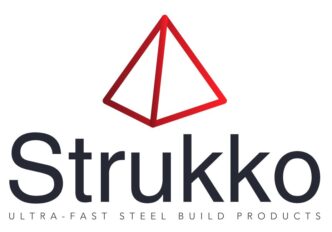
Sustainability in Construction: How Light Gauge Steel Frames Contribute to Eco-Friendly Building Practices
Sustainability is becoming a critical factor in modern construction as the industry seeks to reduce its environmental footprint. Strukko StandFast® Light gauge steel frames (LGSF) play a significant role in advancing eco-friendly building practices, offering several key benefits that align with sustainability goals. Here’s how LGSF contributes to greener construction:
1. Recyclability
One of the primary sustainability advantages of Strukko StandFast® light gauge steel frames is their recyclability. Steel is one of the most recycled materials in the world, and LGSF components can be recycled multiple times without degradation in quality or strength. This reduces the need for raw material extraction and minimizes waste going to landfills, promoting a circular economy.
2. Reduced Waste
LGSF construction involves precision manufacturing, typically using computer-aided design (CAD) systems. This process results in very little material waste during production and construction, as components are cut to exact specifications. The efficient use of materials leads to reduced on-site waste and lower environmental impact compared to traditional construction methods, such as wood framing, where offcuts often contribute to significant waste.
3. Energy Efficiency in Production
Steel production has become increasingly energy-efficient over the years, with advances in technology reducing the energy required to produce steel. This efficiency, combined with the potential for using recycled steel in production, lowers the carbon footprint of LGSF. Additionally, pre-fabricated steel components require less energy for transportation and assembly due to their lighter weight and pre-engineered nature, reducing the overall energy consumption of the project.
4. Thermal Performance and Insulation
When properly designed, LGSF can contribute to energy-efficient buildings with enhanced thermal performance. Light gauge steel framing allows for precise installation of high-performance insulation materials, reducing thermal bridging and heat loss. This can significantly lower the energy demand for heating and cooling in buildings, contributing to lower carbon emissions throughout the building’s lifecycle.
5. Longevity and Durability
The durability of Strukko StandFast® light gauge steel frames ensures that buildings last longer with minimal maintenance. Steel is resistant to decay, pests, and moisture, meaning that structures made from LGSF require fewer repairs and replacements over time. This longevity reduces the need for new materials and additional construction, helping to conserve resources and lower the overall environmental impact of the building.
6. Lightweight Nature
The lightweight properties of Strukko StandFast® LGSF reduce the need for heavy foundations and lower the amount of concrete required for construction. Concrete production is one of the largest sources of CO2 emissions in construction, so minimizing its use through lighter framing systems can contribute to a significant reduction in the building’s overall carbon footprint.
7. Efficient Construction Process
Pre-fabrication of LGSF components in controlled environments allows for more efficient use of resources and energy. Off-site manufacturing reduces the environmental impact of on-site construction, such as noise pollution, emissions from heavy machinery, and disruption to natural habitats. The speed of assembly also means shorter construction periods, which reduces energy consumption and site disturbances.
8. Adaptability and Reuse
Steel structures built with Strukko StandFast® LGSF can be easily modified or dismantled, making them adaptable to changing needs. Rather than demolishing an entire building, steel frames can often be reconfigured for different uses, or components can be repurposed in new constructions. This adaptability prevents waste from demolition and extends the lifecycle of the materials.
9. Contribution to Green Building Certifications
Using light gauge steel frames can contribute to achieving green building certifications such as LEED (Leadership in Energy and Environmental Design) or BREEAM (Building Research Establishment Environmental Assessment Method). LGSF’s sustainable attributes, such as recyclability, energy efficiency, and reduced waste, align with the criteria required to obtain these certifications, promoting eco-friendly building practices.
Conclusion
Light gauge steel frames offer numerous benefits that support sustainability in construction. From their recyclability and reduced waste to energy efficiency and adaptability, Strukko StandFast® LGSF represents a forward-thinking approach to eco-friendly building practices. By embracing LGSF, the construction industry can reduce its environmental impact and contribute to a more sustainable future.
